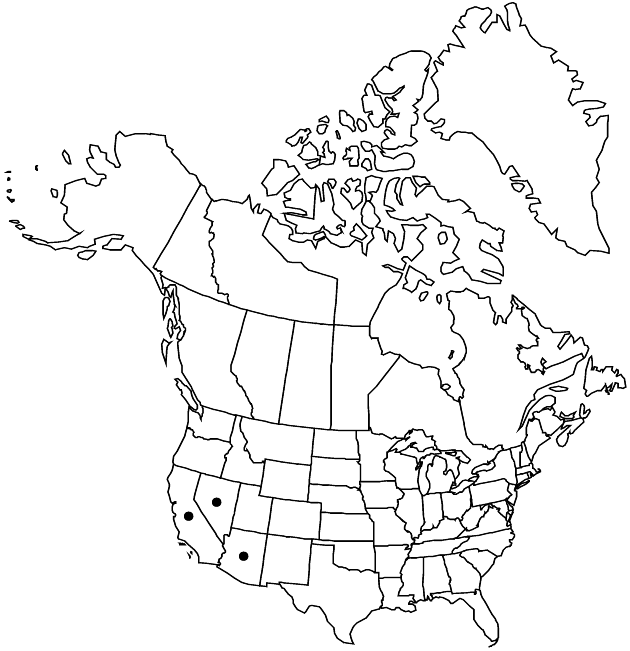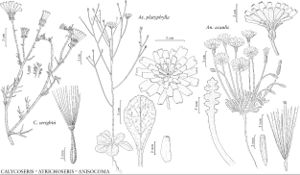Anisocoma acaulis
Boston J. Nat. Hist. 5: 111, plate 13, figs. 7–11. 1845.
Common names: Scalebud
Revision as of 18:37, 24 September 2019 by FNA>Volume Importer
Leaves: blades 2–7 cm, lobes oblong to triangular, abaxially ± floccose-tomentose, glabrate in age. Heads 3–5+ cm diam., nodding in bud. Paleae 7-–13 mm, persistent after cypselae have fallen. Involucres broadly cylindric to campanulate, 15–35 mm. Phyllaries often with reddish tips and dots, outer broadly rounded, 2–6 mm, inner 15–35 mm. Cypselae 4–7 mm; pappi 20–27 mm. 2n = 14.
Phenology: Flowering Mar–May.
Habitat: Sandy washes, dry slopes, chaparral, pine-oak-juniper woodlands, montane coniferous forests
Elevation: 20–2400 m
Distribution

Ariz., Calif., Nev., Mexico (Baja California).
Discussion
Anisocoma acaulis grows on the southwestern fringe of the Great Basin and in the Mojave and Sonoran deserts.
Selected References
None.
Lower Taxa
None.
